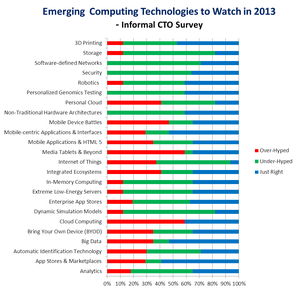To Tame the Onslaught of Big Data, Better Drink Your V8. It will make You Healthy, Wealthy and Wise.
Velocity: It determines the speed and efficiency in capture, storage and retrieval of data and often drives performance and availability requirements.
Veracity: This establishes the authenticity of data that is available to perform analytics and to arrive at useful insights. Data veracity shapes the final strategic actions and is dependent on the accuracy of data.
To this list we add Vulnerability. In today’s #mobile era, with a proliferation of numerous access points and devices and a distributed workforce, IT has become even more concerned with data security.
Vulnerability: This establishes how susceptible corporate data assets are to a plethora of possible malicious attacks. Very comprehensive security solutions are needed to protect strategic data assets.
Beyond deploying comprehensive security solutions, to combat all the Big Data challenges listed above, IT should also invest in solutions for:
Visualization: This helps IT Managers better fathom data growth and patterns and produce actionable insights to better optimize their IT environment. Users can also visualize and traverse enormous data quickly – even in real time – to draw actionable insights and steer subsequent analyses for better business outcomes.
Virtualization: This allows the integration of large data volumes with already-stored data to perform new forms of analyses and predictive modeling. All the data is typically stored in a centralized data warehouse that provides storage and integration for multiple data sources. Virtualization offers the right technique for reuse of datasets across multiple applications and improves data management efficiencies.
Finally, IT must enable users and the business to leverage data to create Value.
Value: Enterprises can unlock the business value by leveraging existing data assets to create information, insights, knowledge, and ultimately greater profits. Using advanced software tools and technologies, enterprises can analyze huge amounts of data to reveal unseen patterns, links across various domains to drive new levels of innovation and customer intelligence.
Beyond V8: Veni Vidi Vici!
But to constantly enhance organizational Vitality, you must “drink fresh V8” and make it an organizational routine. Aged data is like canned juice which often loses many vital nutrients and Vitamins. When my son demands and drinks his fresh apple juice with a twist of ginger and lime from the masticating juicer shown above, he has a sated contended smile on his face. That smile makes all my angst from Big Data and life Vanish!
Published by: Srini Chari


